
A Landscape in Amber
[caption id="TheLakeDistrict_Feature" align="aligncenter" width="1024"]
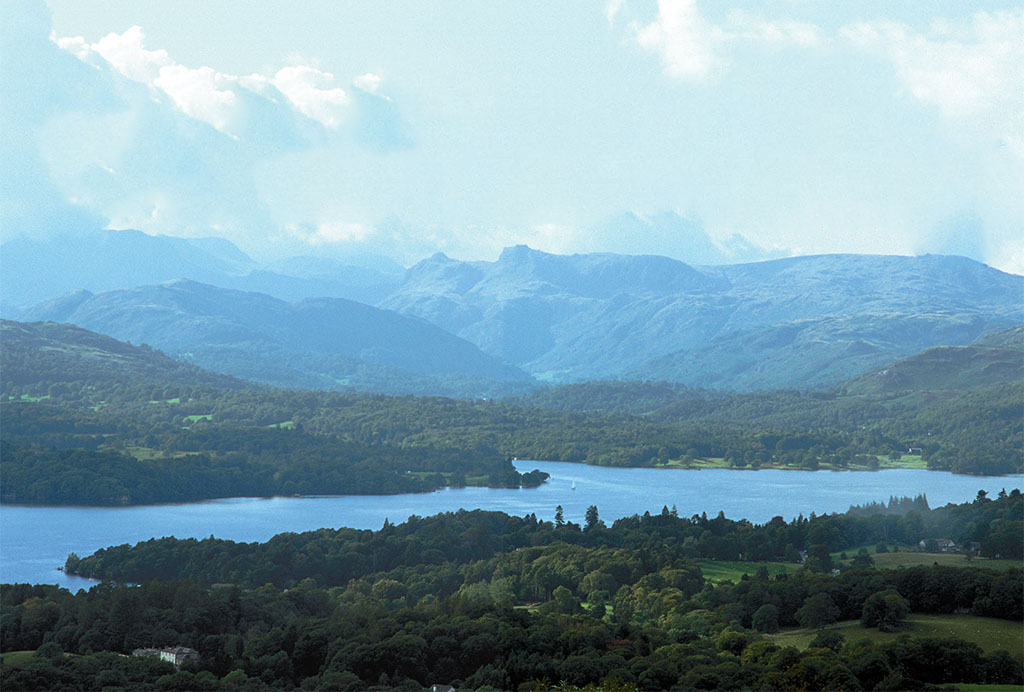
JIM HARGAN
‘THEY WILL WALK FOR MILES JUST TO ENJOY THE SCENERY MORE CLOSELY AND INTENSELY’
IT’S A VIEW YOU just stumble across. A stone farmhouse, bright with whitewash, sits across a cheerful little stream, its front door facing a luxuriantly green meadow where sheep look like tiny white clouds that settled too low to the ground.
Behind this quietly pastoral scene, vast mountains leap up from the backyard, a frozen tsunami of heather, exposed rock and cliffs. Your lonely lane, wide enough for two bicycles abreast, is lined by a wall built of stones stacked without mortar—a friendly wall, pierced by steps marked with a small wooden Public Footpath sign pointing into the fells beyond.
It’s the sort of scene you never expected to see outside a Thomas Kinkade print, or at best a carefully enhanced open-air museum. But this is no museum—it’s an ordinary farm in England’s Lake District. It’s just the natural look of the landscape.
Well, that last statement requires some qualification. It’s sort of the natural look. It has had a lot of help from poets, writers, private foundations and government officials.
The Lake District (also called Lakeland or simply The Lakes) is in England’s far northwest corner, a 900-square-mile oval island of hard, ancient mountains 40 miles long and 30 miles wide, surrounded on all sides by rich, level farmland. Called the Cumbrian Mountains, they are made up of old rocks that have withstood erosion over geologic eras. Their most remarkable features, however, are geologically recent. During the last half dozen ice ages, mile-thick glacial sheets have rolled over the Cumbrians, lowering the peaks and ridges to a dome that tops out at 4,000 feet.
Once each of these continental ice sheets retreated, small mountain glaciers formed near the peaks and squeezed their way down the valleys like toothpaste from a tube. Something like extra-strength toothpaste: These mountain glaciers bulldozed deep U-shaped valleys, typically with a half-mile of flat land at the bottom bordered by incredibly steep sides. Wherever one of these glaciers dug downward a little too enthusiastically, a lake now sits; other lakes (called tarns) formed in the high mountain bowls at each glacier’s source.
Altogether there are about 90 of these natural lakes, the longest (Lake Windermere) topping out at 10 miles. That’s a sizeable proportion of all the lakes, natural or otherwise, in England.
This gives us the characteristic view of the Lake District—a rich, broad meadow or shining lake, out of which jumps a line of cliffs so steep that it seems beyond the possibility of climbing. In point of fact, every one of these slopes can be safely surmounted with no more equipment than a stout hiking stick and a good pair of shoes. Just go around to the end of the valley carved by the mountain glacier, and walk up the smooth ridge left by the continental glacier.
[caption id="TheLakeDistrict_img1" align="aligncenter" width="914"]
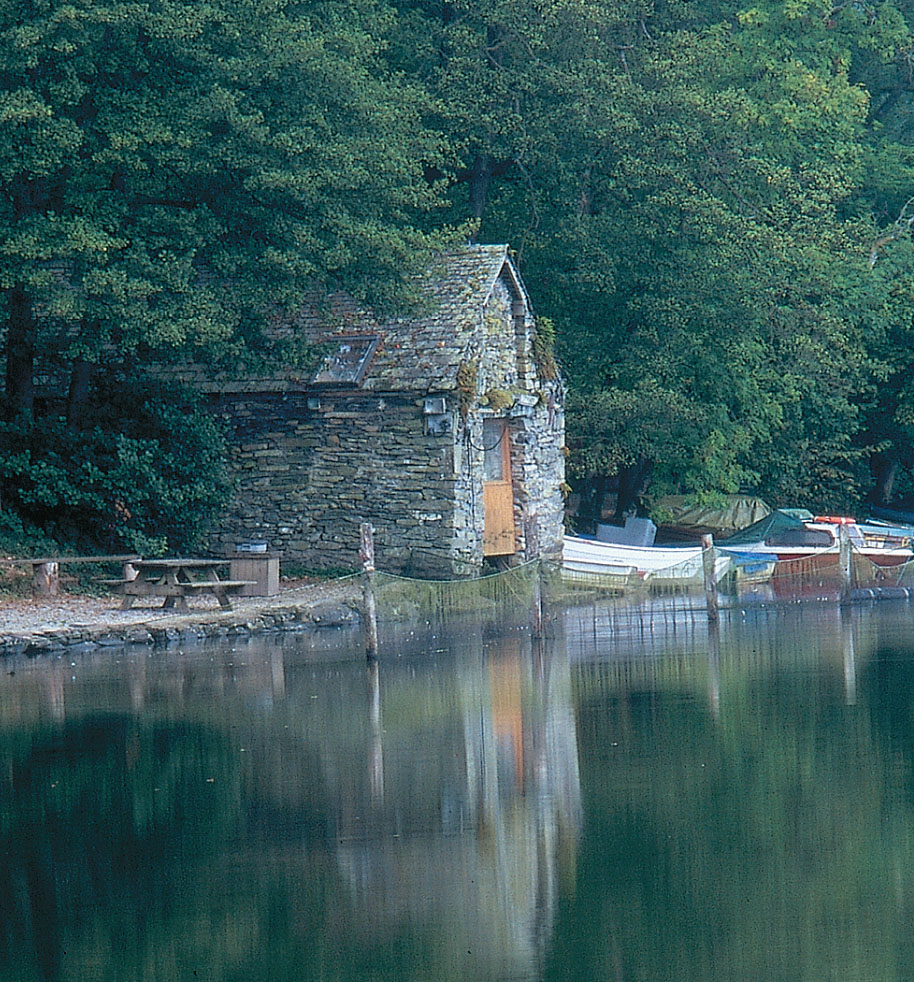
JIM HARGAN
The British respond to this beauty by loving it, simply and without precondition. Most of the British who visit the lakes (14 million a year) seem to feel little need to do anything—kayak, golf, shop, get some exercise, ride a waterslide, whatever—beyond enjoying the scenery. Many are perfectly happy to pull their car off the road at a particularly lovely viewpoint, unfold a couple of chairs, pour tea from a thermos, and stare for half an hour while they sip from their cups. Another popular venue is country pubs, which usually have terraces overlooking some remarkable scenery.
Of course not all the British are this passive in their enjoyment; they will walk for miles—not for exercise, but to enjoy the scenery more closely and intensely. The British will pay a lot to get close to a really beautiful spot, and they consider Lakeland to be the most beautiful spot in England. The Cumbrian economy thrives; the biggest problem is finding places to put all those beauty lovers without spoiling the scenery.
THE LAKES WEREN’T always beautiful. That is, they looked just about the way they do now, but 300 years ago no one thought that was “beautiful.”
At the dawn of the 18th century, the English upper class saw the Cumbrian Mountains as an isolated poverty pocket, inhabited by sullen mountaineers who spoke with an incomprehensible accent and looked askance at strangers.
The upper class didn’t like the mountains, either; they saw them as a howling wilderness, cold and unpleasant. In 1724 Daniel Defoe (of Robinson Crusoe fame) explored these mountains and reported them “the wildest, most barren and frightful of any that I have passed over.” A Londoner of Defoe’s era would no more have gone there for fun than a modern New Yorker would seek a vacation in Harlan County, Kentucky.
[caption id="TheLakeDistrict_img2" align="aligncenter" width="1024"]

GREGORY PROCH
‘WORDSWORTH DESCRIBED ALL THE SUBLIME EMOTIONS CONJURED BY THEIR VISTAS’
[caption id="TheLakeDistrict_img3" align="aligncenter" width="1024"]
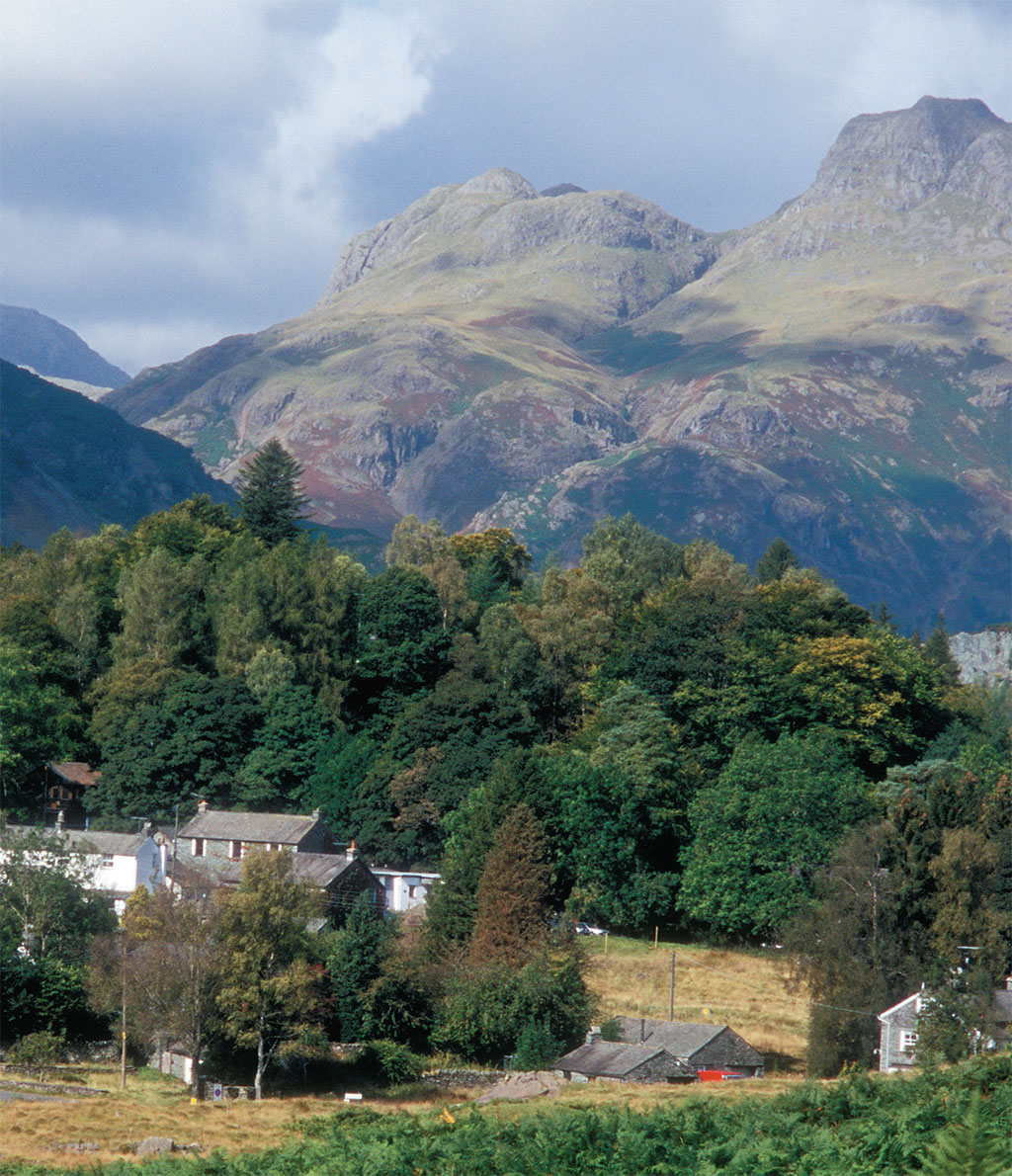
JIM HARGAN
[caption id="TheLakeDistrict_img4" align="aligncenter" width="914"]
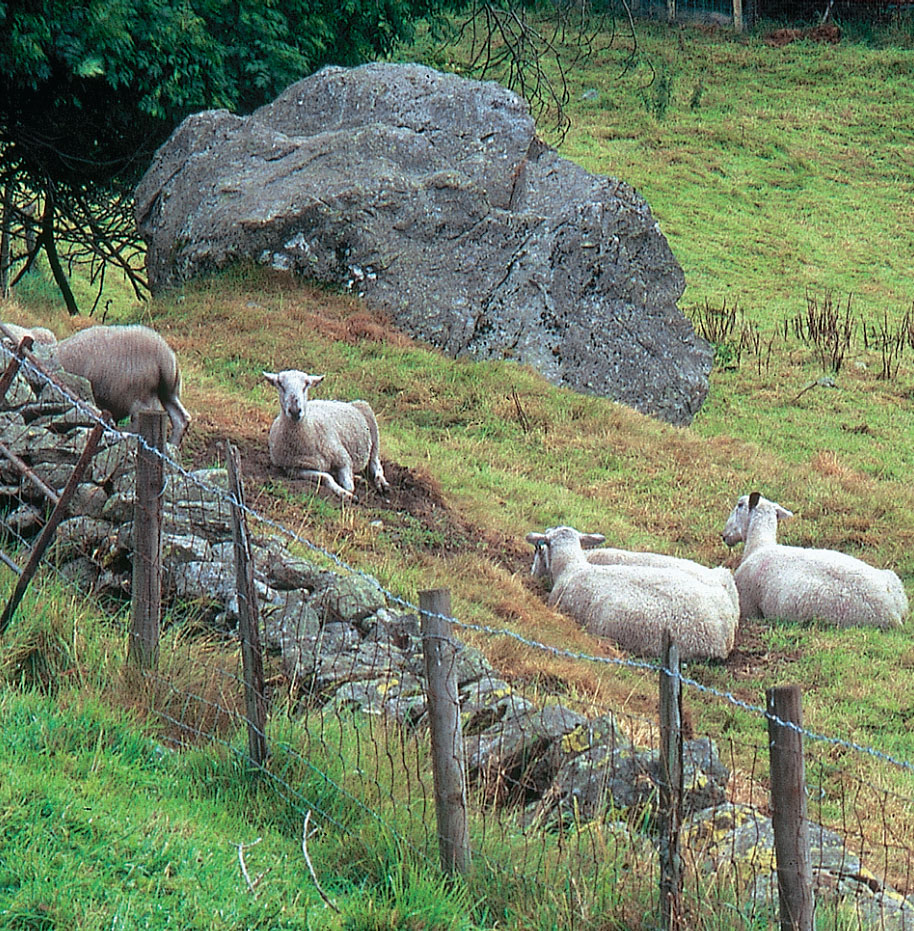
JIM HARGAN
That was before the Industrial Revolution. When the small, old cities of England became foul traps of toxic fumes and disease, ideas of beauty changed quickly. The rational and man-made had given the educated classes a Hell on Earth; so they turned to the natural, and the emotional. They turned to Romanticism—and Romanticism’s leading light, poet William Wordsworth, happened to be from the Lake District.
Wordsworth sang the praises of his beloved Lakes at length and in detail, describing all the sublime emotions conjured by their vistas. Other apostles of Romanticism did too, and a steady pilgrimage of poets visited the Wordsworths, including Southey, Coleridge, Shelley, Keats and Tennyson. Later, John Ruskin would make the Lakes his home.
The things Wordsworth praised were exactly the things that, 100 years before him, people had rejected as ugly: “a place for all kinds of beautiful works of art and nature, woods and valleys, fairy valleys and fairy tarns, miniature mountains, alps above alps,” as his sister Dorothy described the landscape.
By 1820 Wordsworth was actively campaigning to preserve this landscape from the depredations of the modern.
No fewer than three Lakeland houses are preserved as monuments to Wordsworth’s heritage. His boyhood home sits at the center of the town of Cockermouth, on the banks of the River Derwent as it flows from the mountains.
After leaving college he moved into Dove Cottage, a modest and quaint old cottage he shared with Dorothy by the lake known as Grasmere. Later he and his family moved to an attractive small manor nearby, Rydal House, where he lived until his death.
In a very real sense, all the scenery for miles about is a monument to his vision of the Lakes landscape. Its preservation in the form Wordsworth knew it derives both from his expression of its beauty and his campaign to save it.
Wordsworth saw Lakeland as a landscape that had existed from time out of mind, now threatened by modern coarseness and industrialization. That’s not really accurate. It was threatened all right, but the landscape Wordsworth knew had existed for only about four centuries (admittedly a long time, even for England), and had not a single natural feature beyond the rocks of the mountains and the water in the lakes. Wordsworth was looking at a 15th-century landscape of rural poverty that had survived long enough to become quaint.
IF YOU GO BACK a very long time, Cumbria reveals itself as a center of a large and impressive civilization. The New Stone Age’s megalithic culture, noted for huge monuments such as Stonehenge, originated in the Cumbrian mountains to spread north to Scotland’s Orkney Islands, south to the English Channel and over the water to Ireland and Brittany. This was actually quite a sophisticated society, peaceful enough to need no massive fortifications, rich and well-organized enough to build monuments; a society with industry and trade.
Relics include impressive stone circles in Lakeland, the best being Castlerigg near Keswick and the wonderfully named Long Meg and Her Daughters near Penrith.
When the megalithic civilization disappeared, however, Cumbria sank into obscurity, assuming the marginal role it would play for the next four millennia.
Among the English lands, Cumbria emerges last into history, gaining significant written records only after being incorporated into the kingdom of William the Conqueror. It was during the Norman centuries that Cumbria began to gain a landscape Wordsworth might have recognized. William divided the great oval of the Cumbrian Mountains between his noble pals by cutting it into pie slices, each slice having a mountain area at the pointy end and extending out into the flatlands beyond. This allowed each estate to have a variety of types of farmland, a common medieval practice that hedged against agricultural catastrophe.
‘POTTER GAVE 4,000 ACRES, THE CORE OF THEIR LAKELAND HOLDINGS, TO THE NATIONAL TRUST’
[caption id="TheLakeDistrict_img5" align="aligncenter" width="931"]
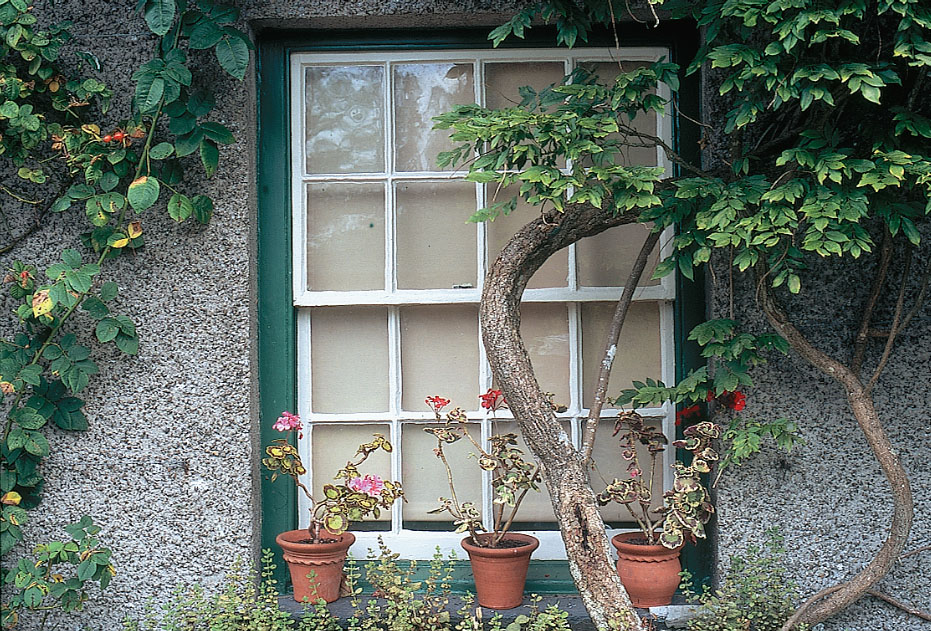
JIM HARGAN
The Norman lords did not leave their mountain lands as waste; instead they gave them over to giant sheepwalks. At the time, the mountains were covered in light forests with little understory. As the sheep grazed under the trees, they ate the tree seedlings along with the grass. It takes a good 10 years for a seedling to get big enough so that it won’t be killed by a sheep; the forest never had a chance. By the 14th century, all the pre-Norman trees had died of old age, and the mountaintop forests simply disappeared. The great open, windswept ranges, so admired by Wordsworth and modern visitors alike, date from these Norman sheepwalks.
BY LATE NORMAN TIMES, the noble lords had begun a three-part strategy of managing their enormous estates. The lowland perimeter they tended to keep in manor farms, owned by them and operated either directly by their stewards (demesne farms) or indirectly by leaseholders (tenant farms).
In the great glacial valleys they would have extensive demesne lands devoted either to sheepwalks or dairy farms, where the animals would graze the mountains in the summer and the valleys in the winter; lower down, they would have large forests, carefully managed for commercial timber and for charcoal, essential for their lead and iron mines deeper in the mountains.
Finally, they sold off their upland valleys to small farmers, and these farmers became the progenitors of the hardy, independent Lakeland freeholders.
A typical freehold might have 30 or so acres, kept in the Scottish infield-outfield manner: a small valley-bottom “infield” tract in permanent cultivation, a set of two or three “out-field” tracts on the rising land behind the farmhouse kept in rotation, and an area of rough grazing on the mountain slopes.
[caption id="TheLakeDistrict_img6" align="aligncenter" width="928"]
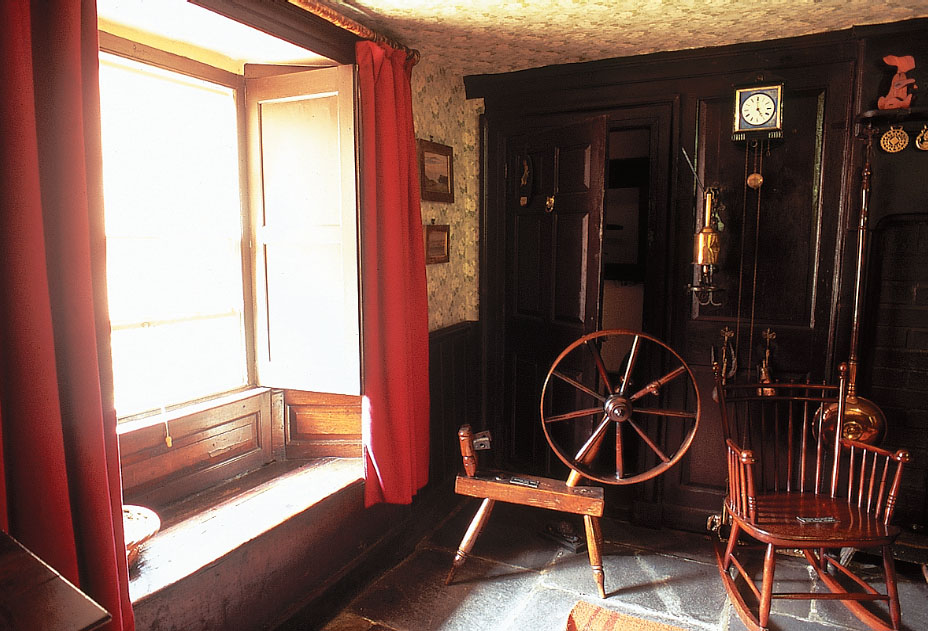
JIM HARGAN
The farmhouse would be made of stone, and would either incorporate the barn as part of the human quarters (a longhouse), or have a barn attached. Wordsworth would have recognized one of these medieval farms instantly, and they can still be spotted in the landscape. Keep a sharp eye out for the longhouses; this is one of the few places in England where this early medieval house can still be seen.
Here you have all the elements of Wordsworth’s picturesque landscape—the rich meadows, lakes and forests of the lush, deep valleys; the quaint old farmsteads of the independent Lakeland farmers; the bare, windy peaks with their endless unobstructed views—all in their present form by the 14th century.
Even one of the great medieval estates survives: Greystoke (yes, Tarzan’s Greystoke), one of the large northeastern pie slices. Although many of its rich lowland farms have long since been sold, its traditional mountain heart remains intact as the largest wholly private noble estate in England. Even more remarkable, Greystoke remains in the hands of its pre-Conquest holders, the descendants of Llyulph de Greystoke, one of the few Saxon lords to survive William’s purge of the English aristocracy. While you can’t visit Greystoke Castle, its village is cute as a button and worth seeking out.
During the 14th century, everything went bad and stayed bad. After the 1314 Battle of Bannockburn, Scotland and England would be at loggerheads for four centuries. Border raids devastated the rich farmlands around the base of the Cumbrians, and the mountains’ fastnesses languished, their trade economy destroyed.
Poverty is a great preserver. Wordsworth wandered through a medieval landscape as he walked the fells—unchanged because no one had the money to change it.
And you can, too. Wordsworth not only taught people how to appreciate this archaic landscape that combines the gentle harmonies of medieval agriculture with the splendor of the mountains, he launched its preservation.
By the early 19th century, mining enterprises had entered The Lakes on a heroic scale, dwarfing the medieval pits. By late Victorian times, large industrial cities were damming the natural lakes to create reservoirs for their water supply.
The fight to block these intruders included Beatrix Potter, the author of Peter Rabbit and a Lakeland sheep breeder. Potter used her Peter Rabbit profits to purchase tracts under threat, then convert them to well-run sheep farms to preserve them. She used many of these farms as models for the watercolors in her “little books.” A booklet is available that lets you match the drawing with its inspiration.
THE MOST FAMOUS and popular Potter site is the first farm she purchased, Hill Top, in the straggling little village of Near Sawrey. It now is a museum run by the National Trust.
Her husband’s law office in nearby Hawkshead is also a National Trust museum, displaying her original drawings. In fact, Potter gave all her property to the National Trust, more than 4,000 acres that form the core of the National Trust’s huge holdings in Lakeland (nearly 25 percent of the mountains). Formed in the Lake District town of Kendal in 1894, the National Trust for Places of Historic Interest or Natural Beauty (as it was then known) has become England’s largest private charity, its vast property now valued at more than $11 billion.
Its current headquarters in Swindon is named “Heelis”—Beatrix Potter’s married name, and an indication of Potter’s importance to the Trust’s mission. When you tromp over the mountains of the Lake District, the land you are walking across is most likely owned by the National Trust.
The National Trust isn’t alone in working to preserve Lakeland’s beauty. In 1951 the Lake District became Britain’s first national park—not an area of government-owned land, but rather an area of strict and specific land zoning, carefully tailored to protect Wordsworth’s much-loved landscapes—landscapes created by medieval farmers and now preserved like a bug in amber, officially declared to be “natural beauty” by Act of Parliament.
This use of the term “natural” may seem odd, but is entirely understandable. All you have to do is have the good fortune to stand in the midst of these mountains and allow yourself to be awed.
[caption id="TheLakeDistrict_img7" align="aligncenter" width="1024"]
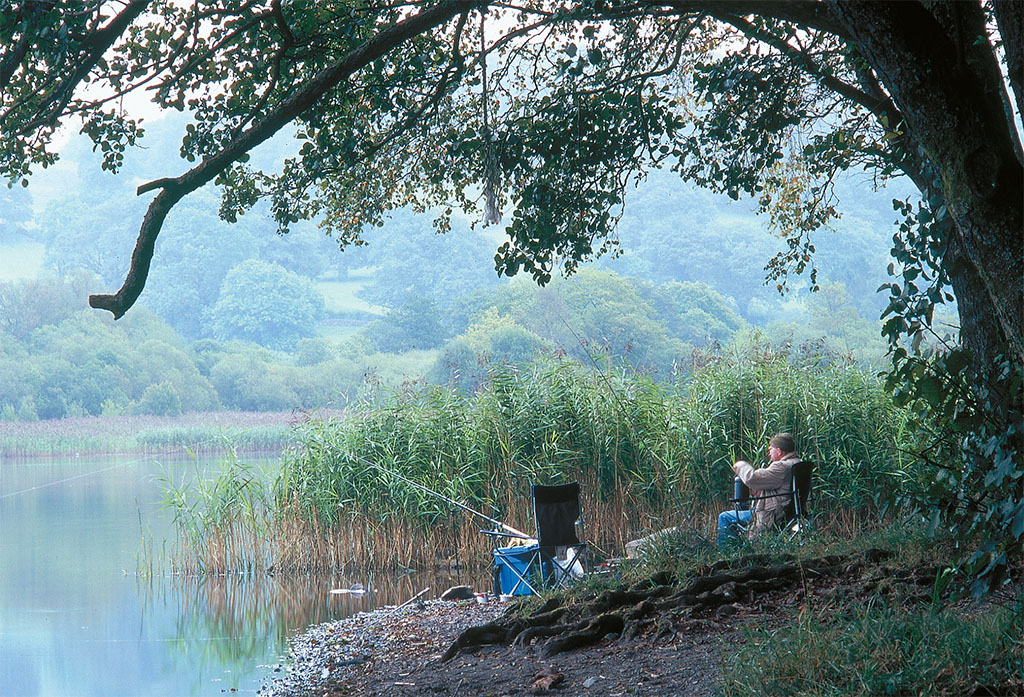
JIM HARGAN





Comments